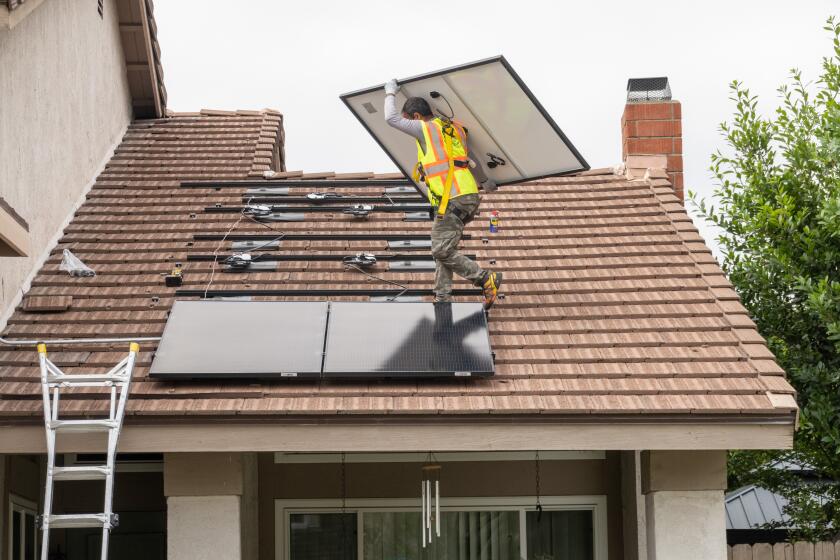Column: Who will make sure L.A. reaches 100% clean energy by 2035?
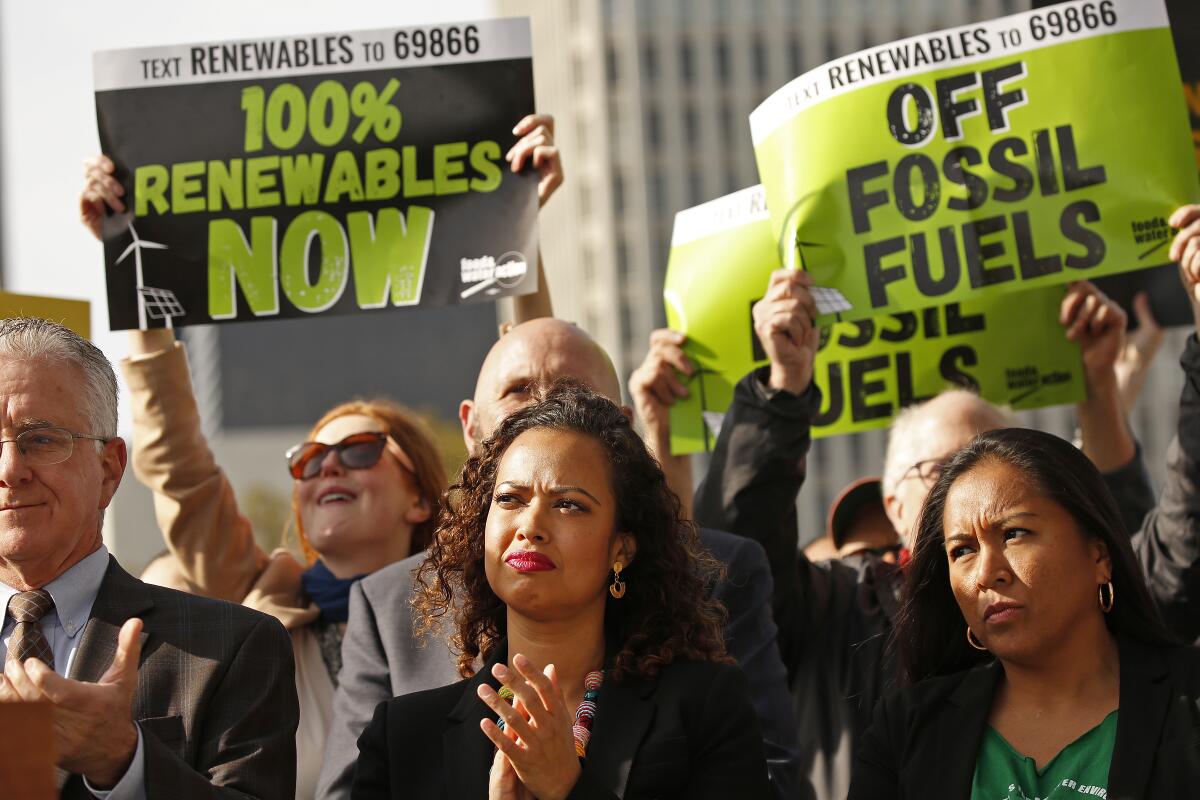
- Share via
Few people have a more important role to play in confronting the climate crisis than the head of the L.A. Department of Water and Power.
Although DWP is best known for its history of shady water grabs — as memorialized in the film “Chinatown” — it’s also a hugely influential player in the energy world. The agency drew international attention when it concluded it would be able to power the nation’s second-largest city with 100% climate-friendly electricity by 2035. Its early investments in large-scale solar power, green hydrogen and other clean energy technologies presaged similar moves by power companies across the country.
So if you care about limiting the deadly heat waves, destructive wildfires and other harms of global warming, you should care that Los Angeles Mayor Karen Bass is looking for a new general manager for DWP.
Marty Adams, the current head honcho, announced over the summer that he would retire in early February. His successor will lead DWP through a crucial period in the clean energy transition, during which the city will hopefully show the world it’s possible to dramatically reduce our use of planet-warming fossil fuels — without prompting widespread blackouts or causing electricity prices to soar out of control.
But some climate advocates are concerned that the Bass administration has done little to solicit public input on the next general manager. They’re also worried that DWP may not be as committed to 100% clean energy by 2035 as it once was.
You're reading Boiling Point
Sammy Roth gets you up to speed on climate change, energy and the environment. Sign up to get it in your inbox twice a week.
You may occasionally receive promotional content from the Los Angeles Times.
Teresa Cheng, a Sierra Club staffer who follows the agency closely, told me city officials have made hardly any public statements about the search for the next general manager. That’s especially problematic, she said, because DWP’s next leader will play a key role in determining not only whether L.A. meets its clean energy goals but whether it does so equitably. That means low-income families and people of color saving money and breathing cleaner air in their neighborhoods.
“We really haven’t seen any public information about this search,” Cheng said.
I reached out to a representative for the mayor’s office late last week, mentioning the transparency concerns I’d heard from climate activists and asking whether Bass would do more to publicize the search process and give members of the public an opportunity to weigh in. Lo and behold, on Monday afternoon Bass’ office sent out a press release announcing that city officials have been working with a private firm to conduct a national search for DWP’s next leader.
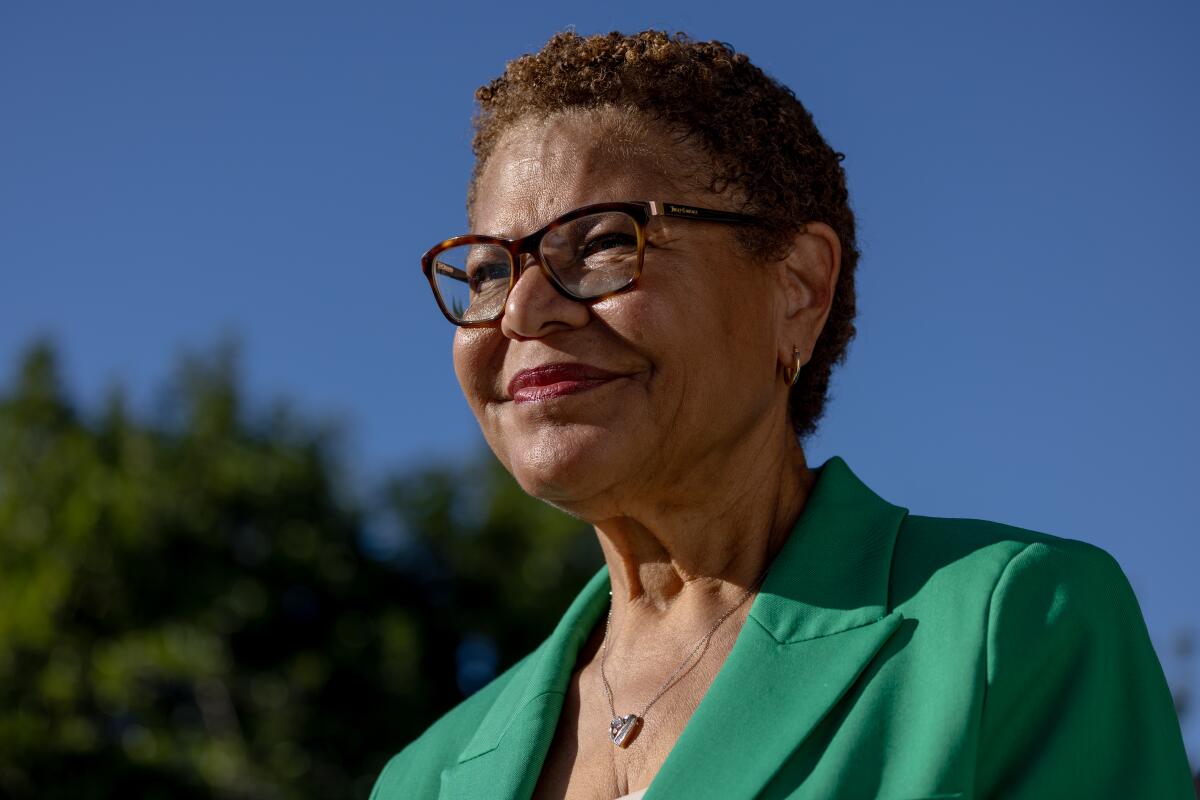
The agency’s general manager “is critical in ensuring equitable service, safety and reliability in Los Angeles as well as helping us achieve the city’s collective goal of 100% clean energy by 2035,” Bass said in the press release.
Is phasing out fossil fuels still a top priority for the mayor and her appointees, though?
That question has been on my mind because of a letter sent by DWP to state officials a few weeks ago, requesting changes to a document drafted by the California Energy Commission. DWP asked the commission to strike a reference to the city’s “goal of 100 percent clean electricity by 2035” and instead refer to a “goal of 100 percent clean electricity” — sans the 2035 date.
That might not sound like a big deal. But it is.
The idea of ending the combustion of coal and natural gas for electricity has long been seen by climate scientists and activists as a necessary first step toward limiting global warming. The sooner we can transition the electric grid to solar panels, wind turbines and batteries, the sooner we can power our cars, trucks and home heating systems with clean energy.
Until recently, U.S. politicians were focused on switching to renewable energy by mid-century. California’s 100% clean electricity law, passed five years ago, included a 2045 deadline. Since then, nearly a dozen states have adopted similar timelines.
But with the world breaking temperature record after temperature record — and floods, storms and droughts getting worse — climate scientists and activists have increasingly argued we must move faster to ditch fossil fuels.
Following their lead, President Biden campaigned on a national target of 100% clean energy by 2035. DWP joined the party a few years later, concluding after extensive study with the National Renewable Energy Laboratory that L.A. can reach 98% clean energy by 2030 and 100% by 2035. Then-Mayor Eric Garcetti quickly endorsed that timeline, as did the City Council.
“This should encourage California to see that it’s achievable everywhere. If the biggest city in the state with the largest municipal utility in the country can do this, you can do it too,” Garcetti said at the time.
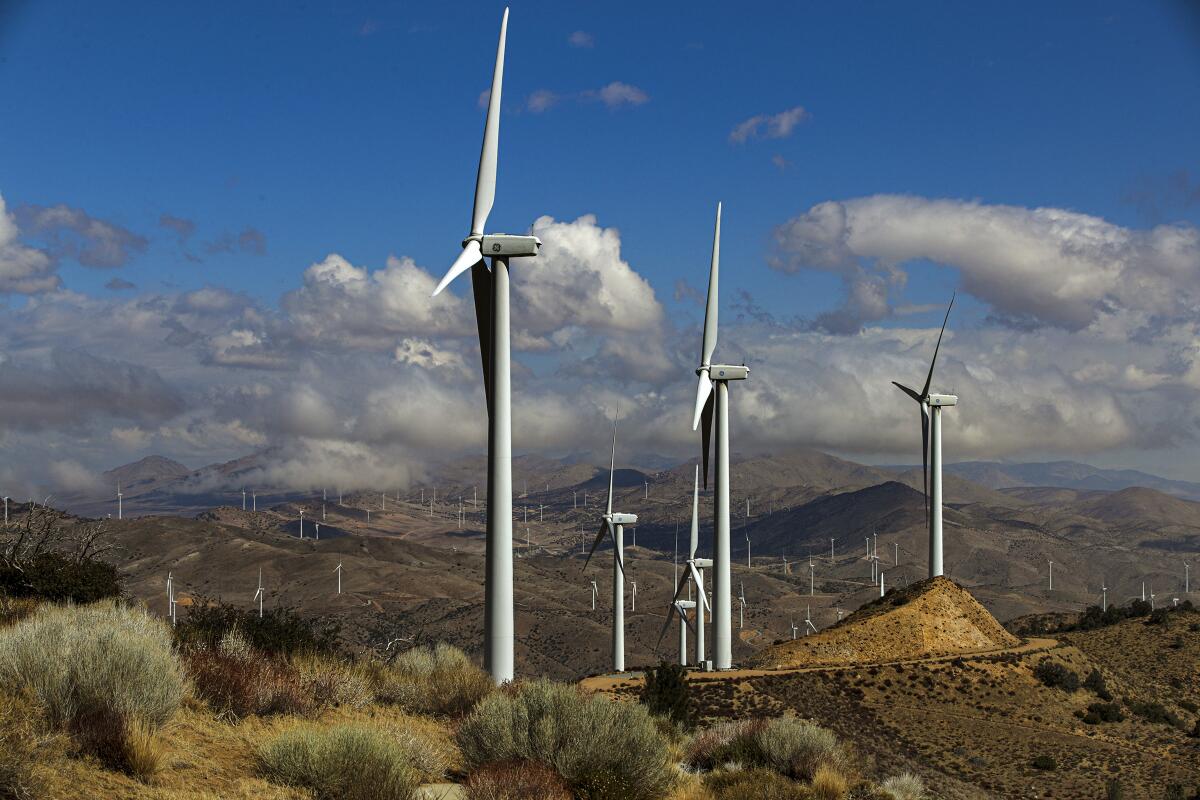
So when I pointed out to L.A. City Councilmember Katy Yaroslavsky — a vocal renewable energy supporter — that DWP seemed to be backtracking on its 2035 commitment in the letter sent to state officials, she was none too happy.
“The City Council and Mayor have been clear about our commitment to reaching 100% clean energy by 2035 and have communicated this clearly and frequently to DWP,” Yaroslavsky said in a written statement. “Any effort by DWP staff to undermine this direction is infuriating and unacceptable. I fully expect the department to correct their filing.”
That’s exactly what happened. By the time I received Yaroslavsky’s statement, in fact, a DWP spokesperson had emailed me an updated version of the agency’s letter that reaffirmed rather than excised the promise to pursue 100% by 2035.
A spokesperson for the mayor’s office, meanwhile, pointed me to a recent news conference during which Bass touted her climate accomplishments, including securing federal funds that she said would help the city hit 100% clean energy by 2035.
“We’re cleaning up our power grid, building new zero-emission transit and transportation options and addressing climate and environmental justice issues, and creating a more climate-resilient water supply,” Bass said.
So is this all a giant nothingburger? Or should we be concerned that L.A.’s climate leadership is slipping?
The answer may depend on DWP’s general manager.
Running the Department of Water and Power is a notoriously tough job — and one that some recent occupants have only made more difficult for themselves. Marcie Edwards stepped down after two-plus years as general manager amid reports of customer dissatisfaction. Her successor, David Wright, was sentenced to six years in prison after he pleaded guilty to bribery.
Adams, to his credit, will be leaving DWP after five and a half years at the helm, and four decades overall.
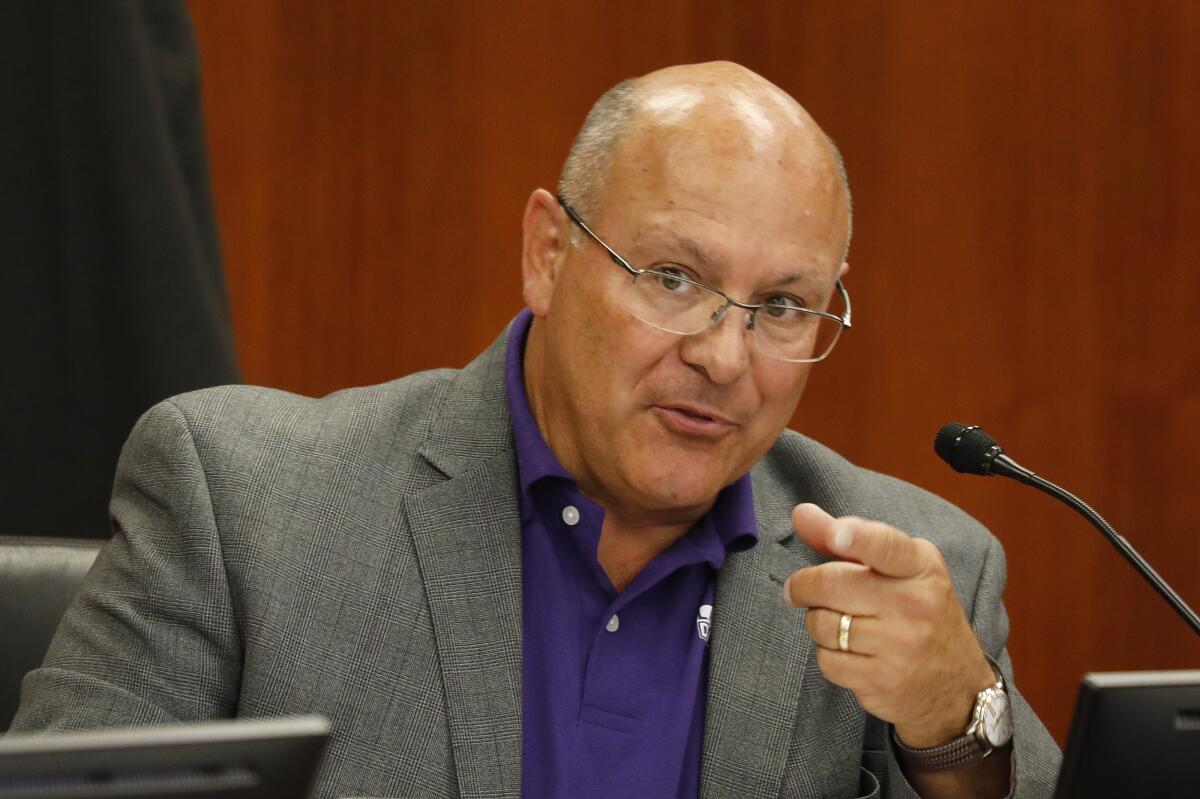
In an bulletin to DWP staff announcing his retirement, Adams said the agency finds itself at a “pivotal point as we see the critical importance of the Department’s role in creating the future of Los Angeles in a time of great economic and social need.”
“I am very excited for the next generation of employees and leaders who will carry this agency, and this City, into a bright new future,” he said.
Those employees and leaders will have difficult questions to answer on the road to 100% clean energy.
Some climate activists are frustrated by DWP’s plan to convert several power plants from burning fossil gas to hydrogen — a top priority for the politically powerful labor unions whose members operate those plants, but a nonstarter for environmental justice groups who worry that hydrogen combustion would lead to continued air pollution in low-income communities of color.
More broadly, DWP will need to make sure its clean energy programs bring proportionate benefits to low-income families and communities of color — which they historically have not, according to a recent report commissioned by the utility.
I’ll be watching closely as Bass chooses the city’s next energy boss. If you hear anything, let me know.
And if you want to weigh in? The mayor’s office isn’t offering any formal venues for public engagement. But Bass’ spokesperson told me the best way to provide input is via public comment at DWP board meetings and City Council meetings.
Whatever happens next, keep paying attention after the mayor makes her choice. We’ve got a long way to go.
On that note, here’s what’s happening around the West:
ENERGY POLITICS
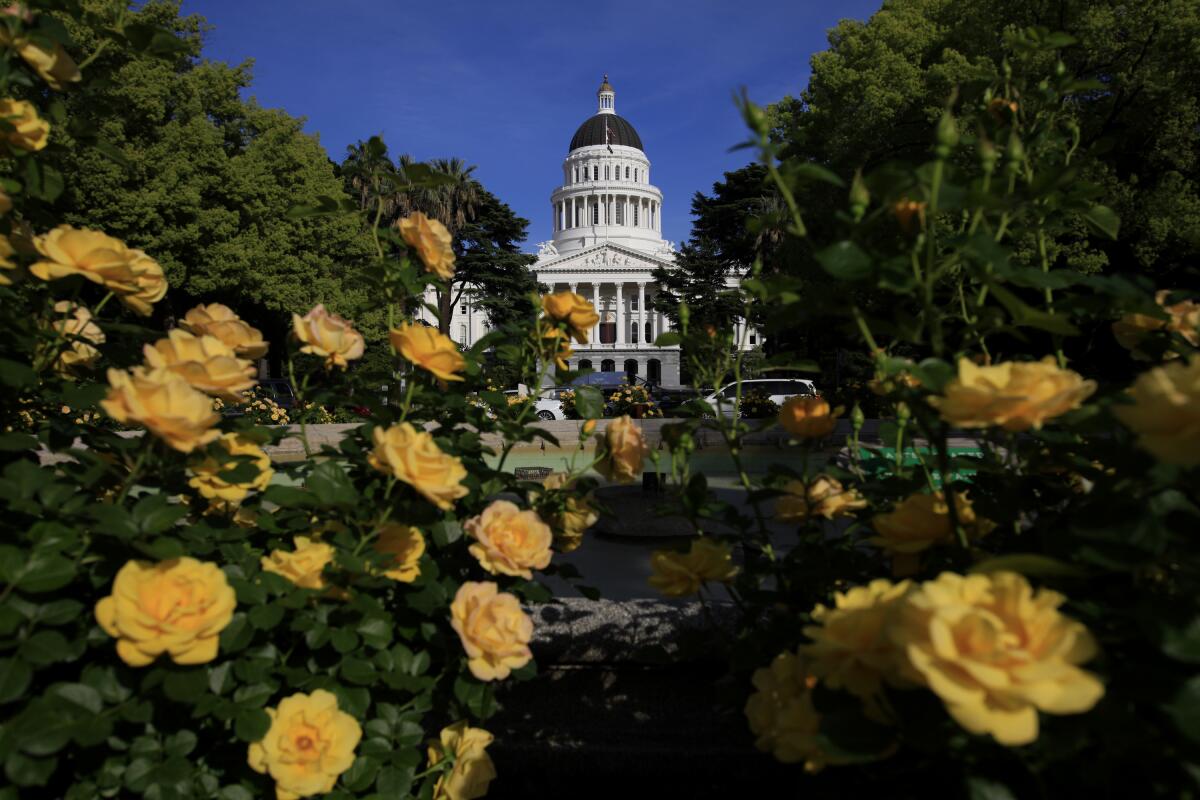
How have Big Oil and Big Labor made it so difficult to pass aggressive climate laws in California? This story by CalMatters’ Ryan Sabalow and Jeremia Kimelman does a great job breaking down the partnership between the two political heavyweights — and the campaign dollars they use to sway lawmakers. And if you’re wondering why last year’s law seeking to limit alleged price-gouging by oil companies — which Gov. Gavin Newsom pushed through the Legislature over industry opposition — hasn’t led to lower gasoline prices yet, E&E News’ Anne C. Mulkern has an explanation.
“A quarter of California households reported being unable to pay their utility bills in October.” So writes KQED’s Vanessa Rancaño in this story, which illuminates the crisis of rising electricity rates — and how it can fuel homelessness. Her reporting is a valuable reminder that if we want to transition our homes from planet-warming gas heaters and stovetops to electric appliances, we need to keep electricity costs down. Speaking of which, Grist’s Akielly Hu has a good rundown of what cities are doing to try to get gas appliances out of homes and businesses, following a court ruling striking down Berkeley’s ban on gas hookups.
That’s the ballgame: California’s Diablo Canyon nuclear plant will be allowed to keep running past 2025. Federal officials have accepted Pacific Gas & Electric’s application to renew the plant’s license, clearing the way for PG&E to continue generating climate-friendly electricity at Diablo beyond a planned 2025 shutdown date, Mackenzie Shuman reports for the San Luis Obispo Tribune. The federal decision was a victory for Newsom, who — as I’ve reported previously — has fought to keep the plant open through at least 2030, arguing that it’s become a crucial tool for keeping the lights on without fossil fuels.
HOW WE GET AROUND
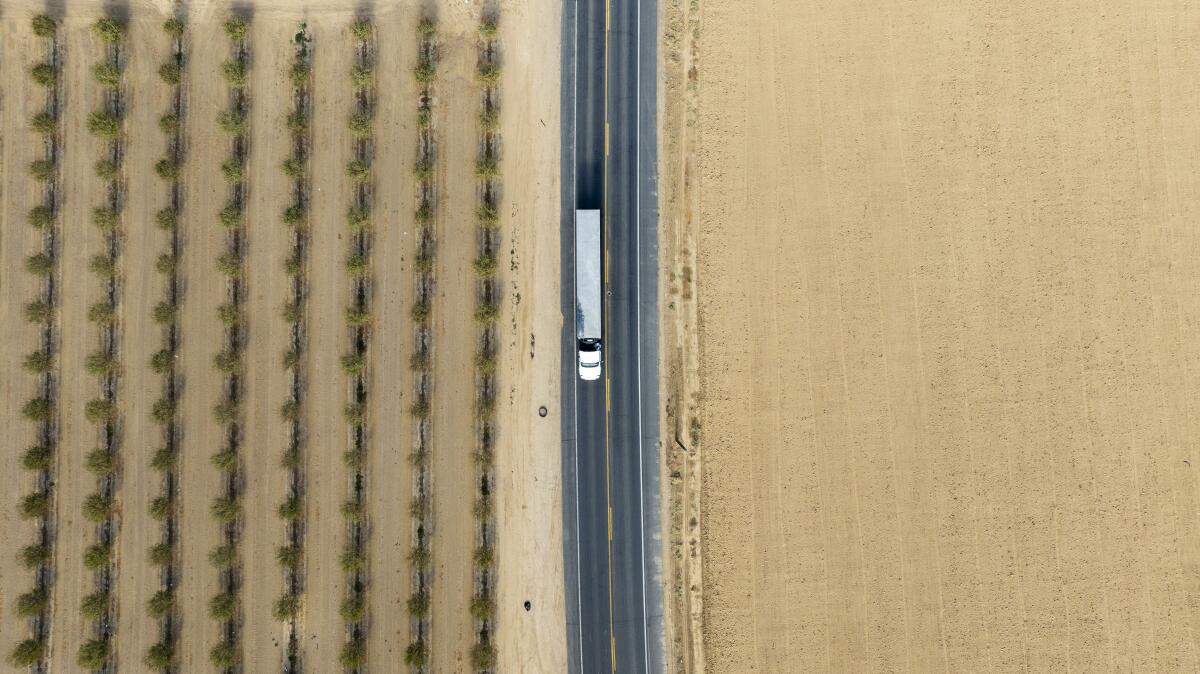
Less groundwater pumping and more reliable high-paying jobs are good — but truck traffic spewing toxic air pollution and heat-trapping emissions, not so much. That’s the tension at the heart of this fascinating story by my L.A. Times colleague Rebecca Plevin, about the warehouse boom getting underway in California’s San Joaquin Valley. “Unlike the Inland Empire, where warehouses have moved in at tremendous cost to densely packed neighborhoods, the valley offers open space, cheap land and workers eager to exchange backbreaking farm labor for a different kind of toil, indoors,” Rebecca writes.
Remember all those electric car chargers Volkswagen built as part of a legal settlement to make up for its emissions-cheating scheme? Customers say they work terribly. That’s according to this piece by the Washington Post’s Shannon Osaka, which notes that Volkswagen’s Electrify America fast-charging network ranked last in a recent customer satisfaction study.
The decline of intercity bus terminals is a slow-burning public transit crisis — and one I knew nothing about until I read this great story by CNN’s Nathaniel Meyersohn. Not only is it getting harder to travel across the U.S. by bus, noted journalism industry villain Alden Global Capital is partly to blame. The New York-based hedge fund — which has bought newspapers across the country and cut them to the bone — is purchasing bus terminals and selling them to real estate developers.
AROUND THE WEST
The weed killer paraquat is banned in 50 countries — but not California. Some people who have used it say they’re suffering from Parkinson’s disease as a result, and there’s lots of science suggesting they may be right, The Times’ Hayley Smith reports.
“People can also change. They can learn to live within the limits of the planet, to heed the warnings written in wood.” So write the Washington Post’s Sarah Kaplan, Bonnie Jo Mount, Emily Wright and Frank Hulley-Jones, in a gorgeous story focused on a scientist studying ancient Sonoran Desert tree rings in an effort to learn from the past what humanity’s future may hold.
After years of preparation, there are wolves on Colorado’s Western Slope again. The Colorado Sun’s Jason Blevins was there to watch their reintroduction by state wildlife officials. “The wolf loped through the snowy meadow into a copse of aspens, her fur blending with the browns, grays and whites of the remote corner of state land,” he wrote. “She turned for a moment to look back at the collection of about 45 people gathered around the crates before trotting into the forest.”
ONE MORE THING
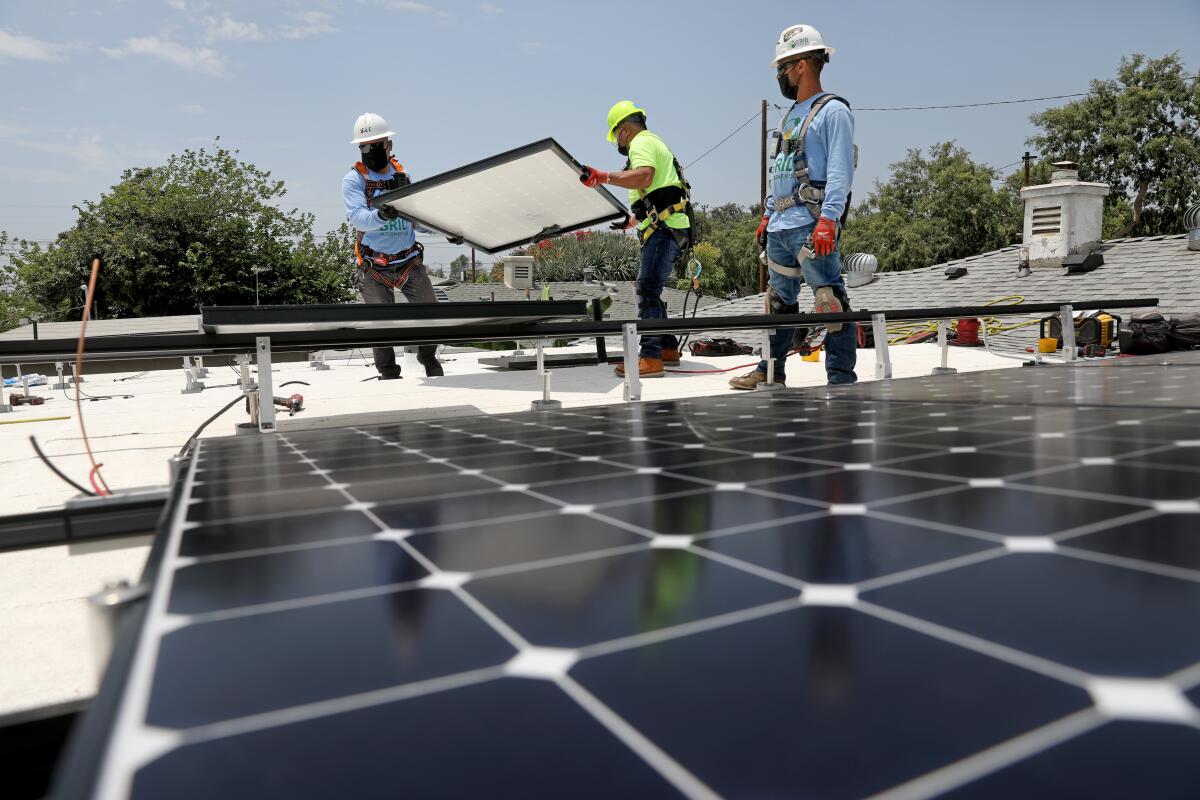
I wrote last week about a lawsuit brought by several environmental groups seeking to overturn the California Public Utilities Commission’s decision to slash rooftop solar incentives. The state’s 1st District Court of Appeal released its ruling Wednesday, upholding the large cuts to solar incentives — despite some reservations from Presiding Justice Alison Tucher.
“The issue before the court today is, as the majority notes, not whether the Commission has chosen the best possible” method for compensating homes with rooftop solar panels, Tucher wrote in a concurring opinion, supporting the other two judges even as she wondered whether their ruling would lead to the best possible outcome. “Rather, we are asked simply to decide whether the Commission has chosen a course that complies with the law and is reasonably supported by the evidence.”
ACTUALLY, JUST ONE MORE
I’ll be taking a break from Boiling Point for the end of the year. You can expect the next edition in two weeks, on Jan. 4.
Until then — stay well, enjoy the holidays and Happy New Year.
This column is the latest edition of Boiling Point, an email newsletter about climate change and the environment in California and the American West. You can sign up for Boiling Point here. And for more climate and environment news, follow @Sammy Roth on X.
Toward a more sustainable California
Get Boiling Point, our newsletter exploring climate change, energy and the environment, and become part of the conversation — and the solution.
You may occasionally receive promotional content from the Los Angeles Times.




